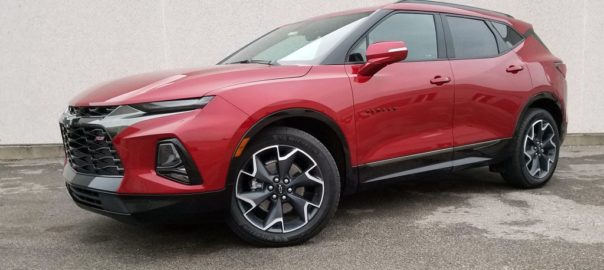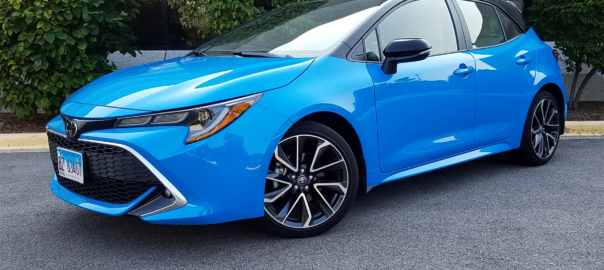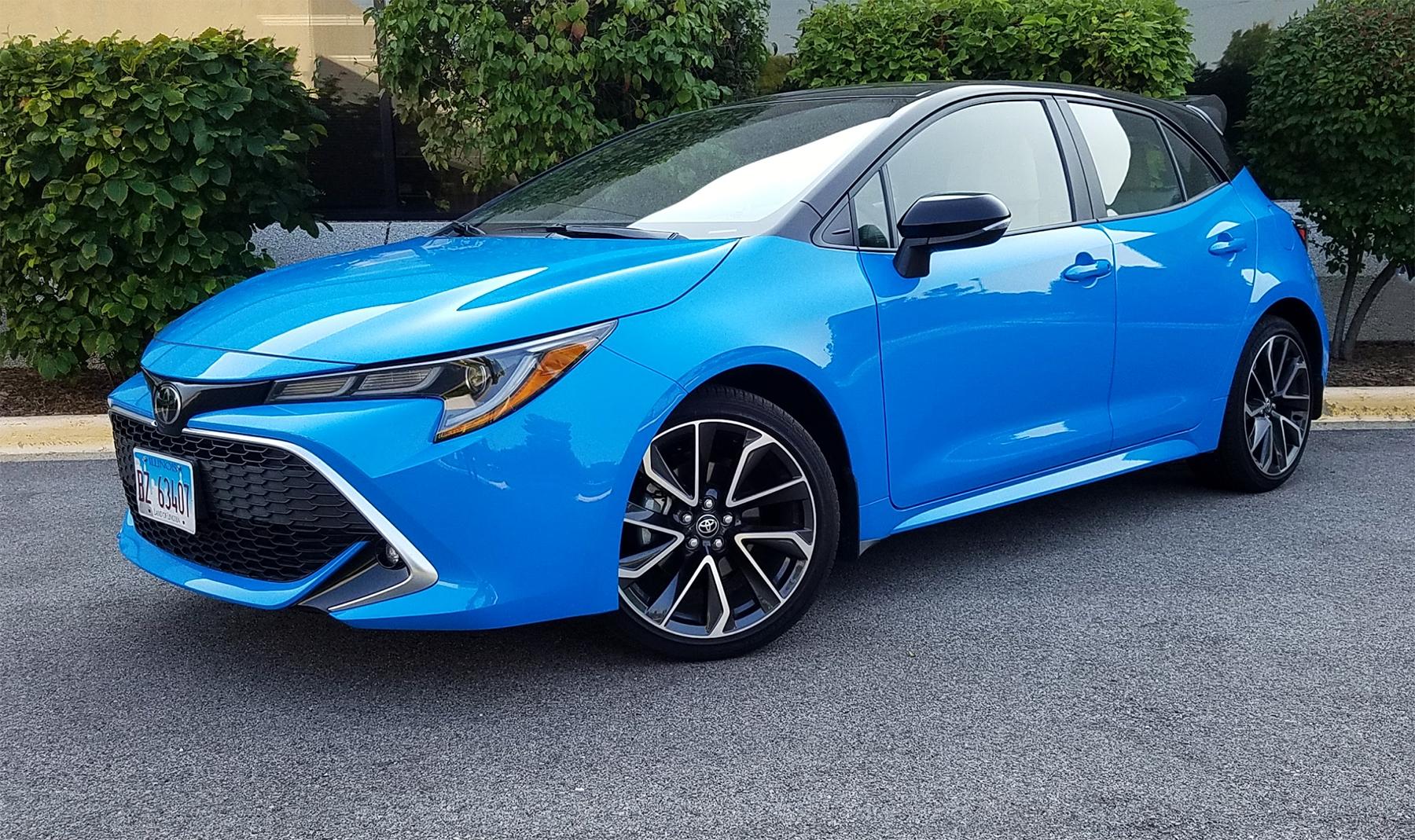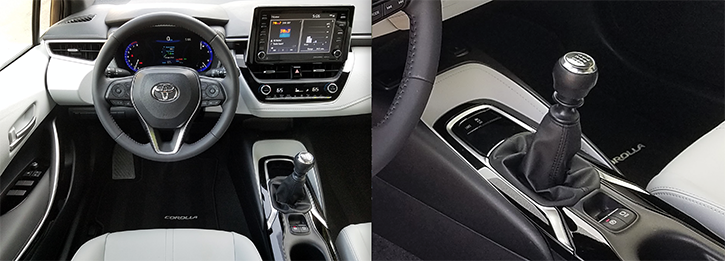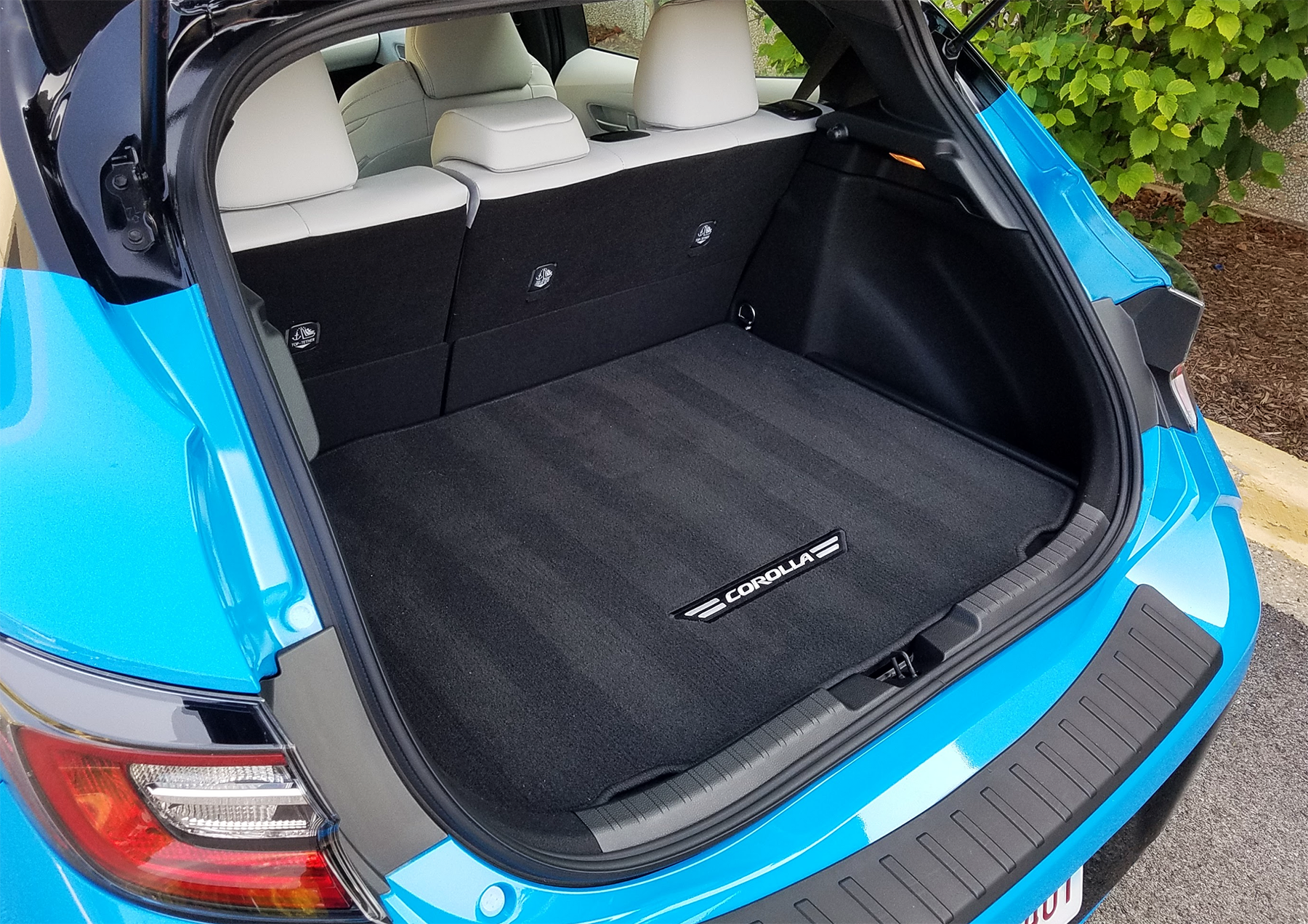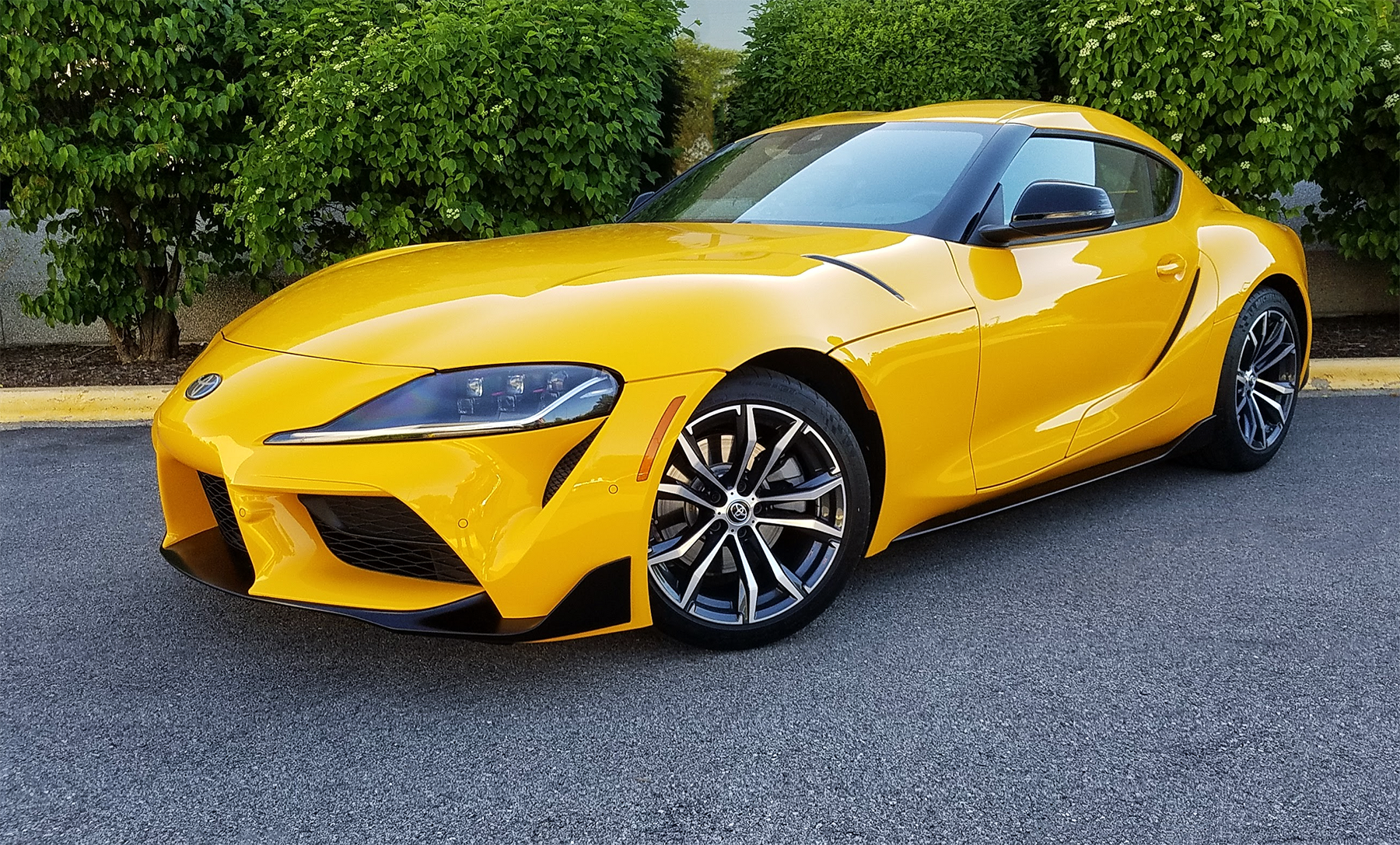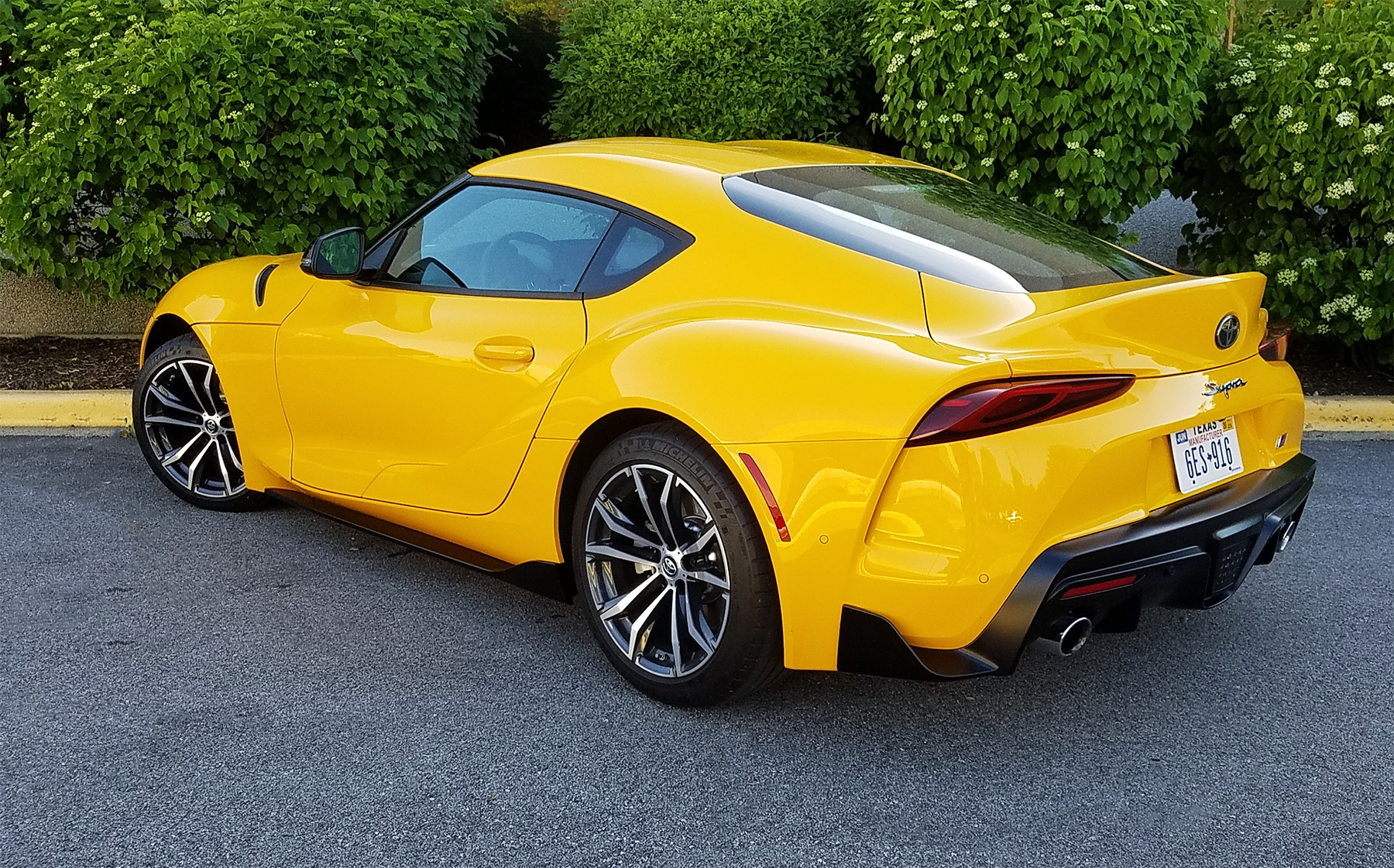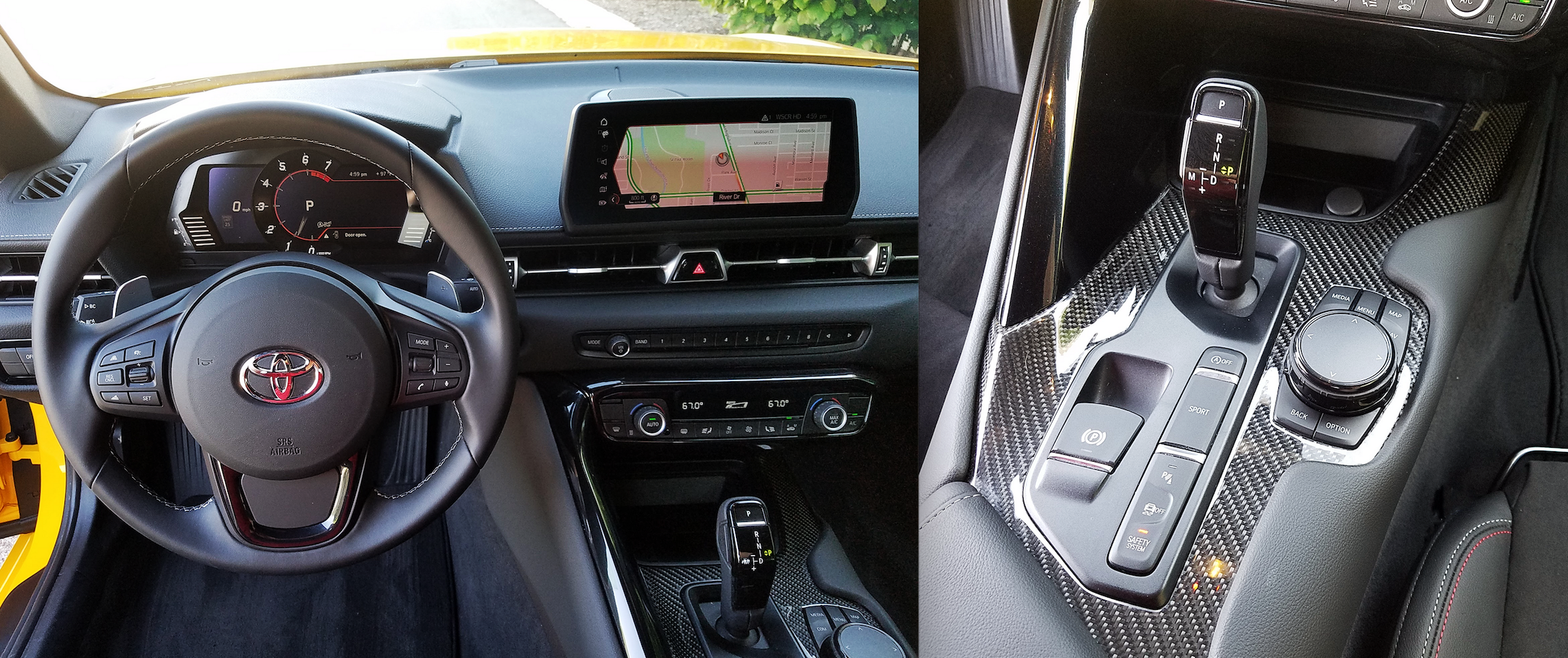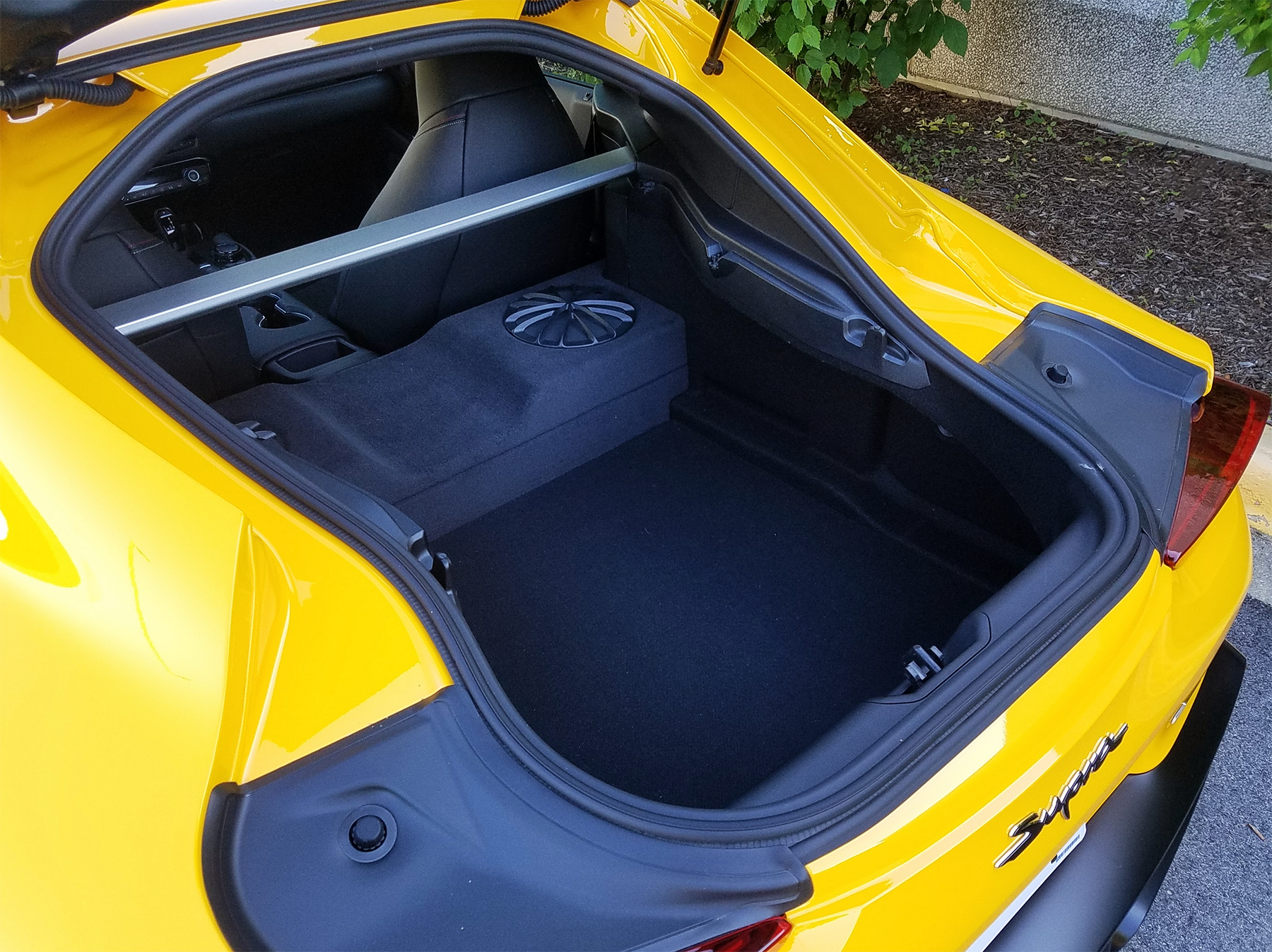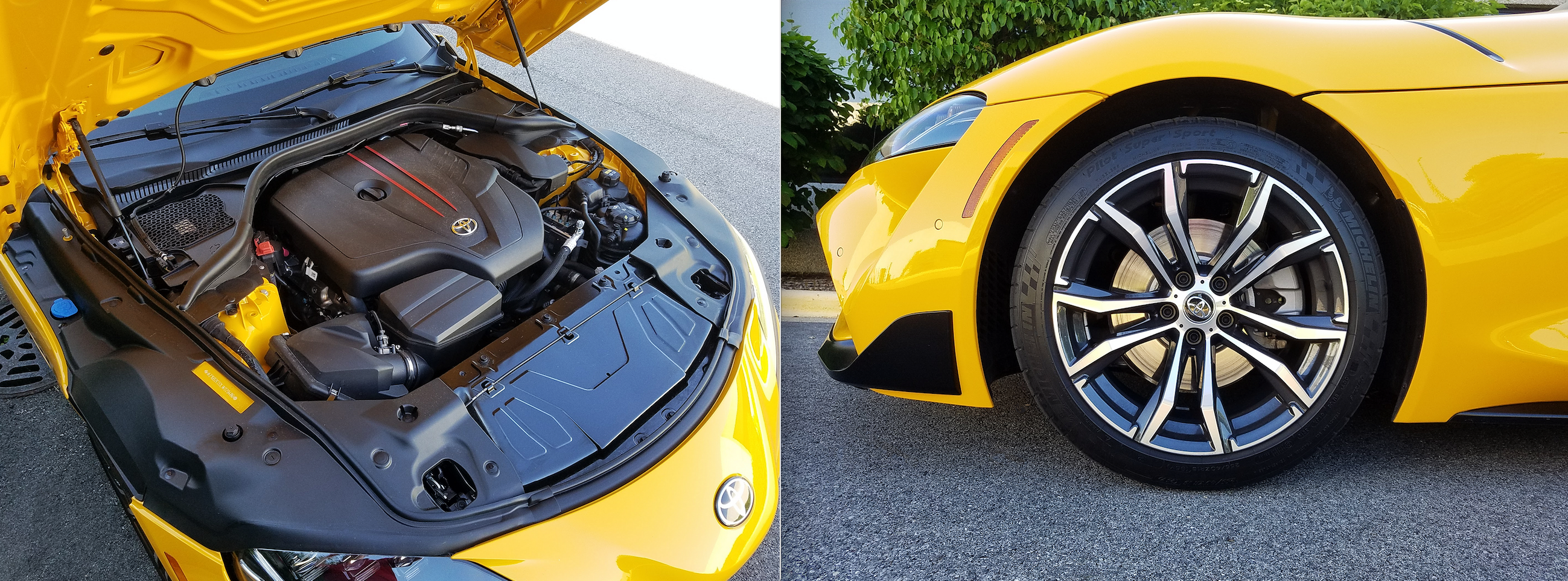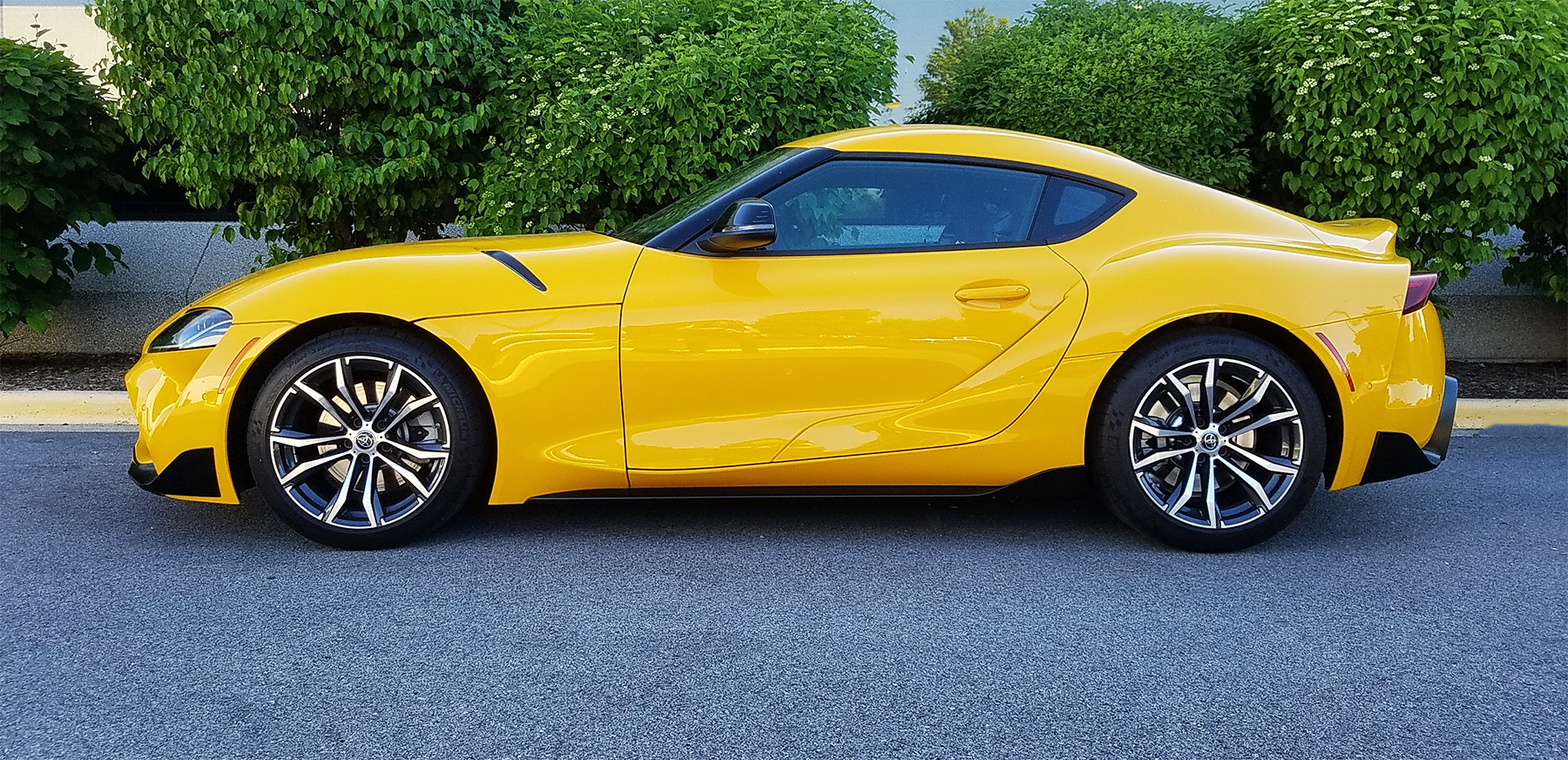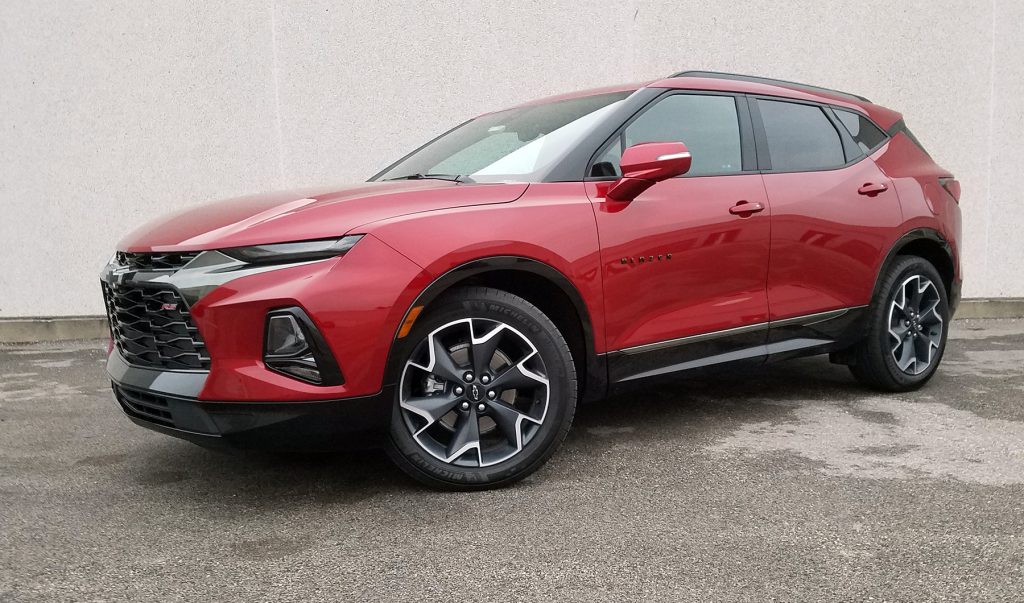
2021 Chevrolet Blazer RS in Cherry Red Tintcoat (a $495 option)

2021 Chevrolet Blazer RS AWD
Class: Midsize Crossover
Miles driven: 162
Fuel used: 9.2 gallons
Real-world fuel economy: 17.6 mpg
| CG Report Card | |
|---|---|
| Room and Comfort | B+ |
| Power and Performance | B+ |
| Fit and Finish | B+ |
| Fuel Economy | B |
| Value | B- |
| Report-card grades are derived from a consensus of test-driver evaluations. All grades are versus other vehicles in the same class. Value grade is for specific trim level evaluated, and may not reflect Consumer Guide’s impressions of the entire model lineup. | |
| Big & Tall Comfort | |
| Big Guy | A |
| Tall Guy | A |
| Big & Tall comfort ratings are for front seats only. “Big” rating based on male tester weighing approximately 350 pounds, “Tall” rating based on 6’6″-tall male tester. | |
| Drivetrain | |
| Engine Specs | 308-hp 3.6 liter |
| Engine Type | V6 |
| Transmission | 9-speed automatic |
| Drive Wheels | AWD |
Driving mix: 40% city, 60% highway
EPA-estimated fuel economy: 19/26/21 (mpg city/highway/combined)
Fuel type: Regular gas
Base price: $43,700 (not including $1195 destination charge)
Options on test vehicle: Enhanced Convenience Package ($1660), Driver Confidence II Package ($1650), Cherry Red Tintcoat paint ($495), Storage Optimization Package ($175)
Price as tested: $48,875
Quick Hits
The great: Smooth, strong powertrain; generous occupant space in both the front and rear seats
The good: Polished road manners with a touch of athleticism; long list of available comfort, convenience, and safety features
The not so good: Pricing is somewhat steep compared to similarly capable class rivals; disappointed observed fuel economy compared to EPA numbers
More Blazer price and availability information
CG Says:
If you consult the 2021 Blazer entry at the Consumer Guide Automotive website, you will read a line that tells you Chevrolet’s 2-row midsize crossover is unchanged for the year. That does not mean one of its models hasn’t gotten a bit more distinctive, however.
Attribute it to addition by subtraction. In 2020, all-wheel-drive RSes and Premiers came with a twin-clutch rear axle that could shift torque to the rear wheel with the best traction in poor road conditions. This was a little more complex than the base AWD system used by 2LT- and 3LT-trim models. However, for ’21 only the sport-look RS retains the more-sophisticated setup while the top-level Premier gets the cheaper system that relies on braking intervention to ration out torque.

The sporty RS is the penultimate model in the Chevrolet Blazer lineup, slotting in below the top-line Premier.
Consumer Guide tested the 2021 RS with all-wheel drive, a vehicle with a starting price of $44,895 including delivery. (A front-drive RS goes for $2900 less.) Available only with a 308-horsepower 3.6-liter V6 engine, it furthers its sportier vibe with a high-gloss-black hexagonal-design grille with Black Ice header bar, black bowtie emblem and RS badging, rectangular bright tips for the dual exhaust outlets, specific lower-body moldings with Black Ice insert, and 20-inch Dark Android machined-face aluminum wheels. There’s red stitching and other highlights in the cabin, where Jet Black perforated leather covers the seats. A 6-speaker audio system is standard, and RS is the trim level at which a hands-free liftgate, navigation, high-definition touchscreen, 120-volt power outlet, ambient interior lighting, automatic heated steering wheel, 8-inch color driver-information display, and front type-A and -C USB ports with auxiliary input jack and SD card reader kick in.
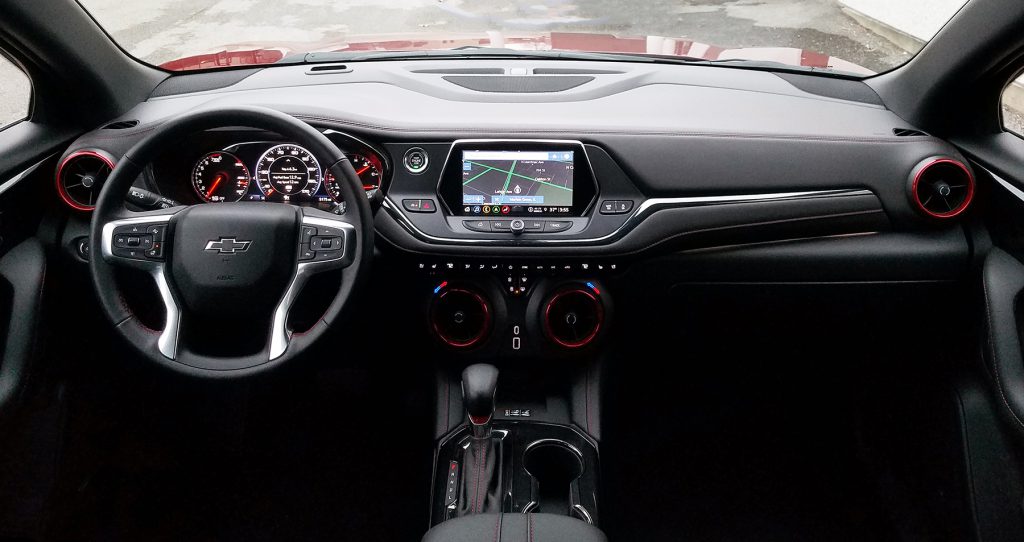
The RS cabin gets sporty trim touches, such as red contrast stitching and red-tinted HVAC-vent bezels, that help keep it from looking too monotone. Chevrolet’s excellent Infotainment 3 Plus touchscreen system is standard equipment.
Built-in driving assists include blind-spot and rear cross-traffic alerts, lane-departure warning, forward-collision alert with emergency pedestrian braking, and teen-driver monitoring. Options that drove the full price of the test vehicle to $48,875 included things like a rear-camera mirror, enhanced emergency braking, adaptive cruise control, and various convenience and cargo-management extras.
Quick Spin: 2021 Toyota Venza Limited
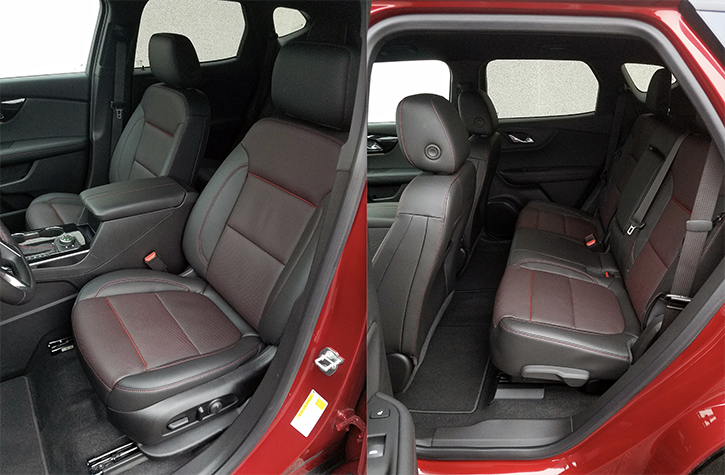
There’s generous space in both the front and rear seats. The rear seat backs recline, and the seats themselves slide fore and aft to favor passenger legroom or cargo space. The Blazer RS’s perforated seat-upholstery inserts are colored red inside the perforations, which makes for a interesting effect that coordinates with the red contrast stitching.
As when we tested an all-wheel-drive 2019 Premier with the same V6 and 9-speed automatic transmission, the powerteam in the RS was admirably smooth and commendably lively. Selecting “Sport” mode switches on AWD and makes shifts feel more direct. The RS is also the workhorse of the Blazer clan, with a maximum towing capacity of 4500 pounds, and it is better suited to the job thanks to hitch guidance with Hitch View and heavy-duty cooling that are standard on the AWD RS. Our test Premier averaged almost 22 mpg with a majority of highway driving; the RS was closer to 19 with more city driving in the mix. There’s a fuel-saving engine stop-start function, but drivers who might find it bothersome will be happy to know this is one Chevy in which they can turn it off.
Ride is firm yet still comfortable and pleasingly quiet. While steering is a little too light and lacking in feel when in “Normal” mode, it firms up quite a bit when switched to Sport.
Test Drive: 2021 Chevrolet Trailblazer LT
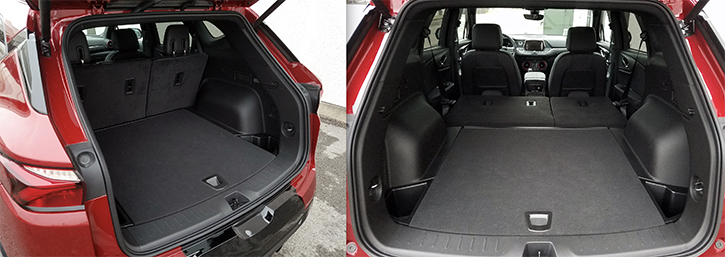
There’s 30.5 cubic feet of cargo room behind the Blazer’s second-row seats, and 64.2 cubic feet with the rear seat backs folded–respectable, but less than two-row class rivals such as the Ford Edge and Hyundai Santa Fe.
Nice passenger space is offset by overall cargo room that trails other entries in the “small-midsize” niche. Indeed, the Blazer is part of a new breed of crossovers trying not to look like big, square wagons at the willful sacrifice of some load capacity. Rear seats fold flat but leave a tiny gap from the load floor. The RS’s red accents—including the big, round bezels for the air vents—add some zing to what borders on being a stark interior. Personal-item storage is good and the Chevrolet Infotainment 3 system is extremely easy to understand and use.
In general, the modern Blazer is well-suited to the current crossover market that demands more than one-size-fits-all vehicles. The Blazer RS gives shoppers one more particular way to make that point.
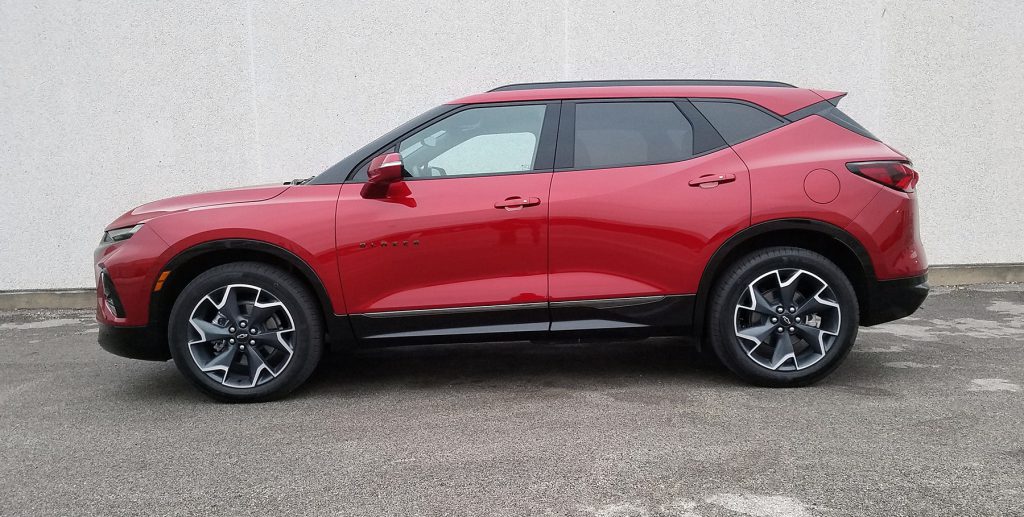
The Chevrolet Blazer RS is arguably the sleekest, snarkiest-looking mainstream-brand midsize SUV, and it has a driving personality to match. It’s notably pricier than most similarly capable class rivals, however.
Listen to the Consumer Guide Car Stuff Podcast
2021 Chevrolet Blazer RS Gallery
(Click below for enlarged images)
2021 Chevrolet Blazer RS
For GREAT deals on a new or used Cadillac check out Carter Cadillac TODAY!
